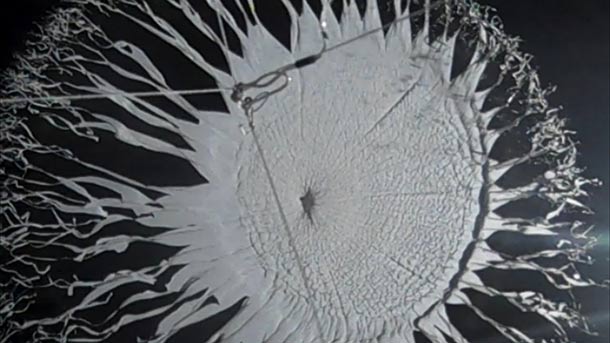Create a free profile to get unlimited access to exclusive videos, sweepstakes, and more!
High schoolers totally shred on a high-altitude balloon

I've written about high-altitude balloon science before: small weather balloons can carry scientific payloads up to heights of 30 kilometers or more, where they can detect cosmic phenomena normally blocked by the Earth's atmosphere. Experiments with balloons are relatively inexpensive and don't take vast amounts of time and labor to do, so one of the very cool things about them is that they can be done by young kids in school.
As part of Project SMART, a team of high school students along with mentors from the University of New Hampshire recently sent such a balloon up to 32.2 kilometers - 20 miles! While that's not technically into space (which begins officially at a height of 100 km), it's still high enough that the sky is black, and the view of Earth is simply breath-taking:
[Click to montgolfierenate.]
On board was a Geiger counter to measure cosmic rays (subatomic particles zipping through space), as well as a pink Styrofoam dish-shaped re-entry vehicle which returned the package safely to the ground; they say this is the first time that's been done in the small-balloon community. Nifty. Now I'll note that heights like this are often reached in these flights, so that picture by itself - while beautiful - is not really why I'm posting this. This picture is why:
The camera they flew up with their experiment happened to catch the balloon just as it burst! The balloons are designed to do that; once they get to maximum altitude they pop and the payload drops back to Earth and can be recovered (otherwise the balloon would stay afloat for a long time, and the experiment lost as it drifted away to parts unknown). There's also a neat picture of the Earth in the background with bits of shredded balloon falling down, too.
Of course, that's not the only reason I posted this. Science comes in many degrees of difficulty, from complex international experiments that cost billions, to do-it-yourself packages that are affordable to many high schools. Ballooning is an amazing gateway to science, and I encourage any teachers reading this to look into it! Check out Project SMART and see if this is something you can do, too.
Image credit: UNH and Lou Broad
Related Posts:
- Up, up, and aurora
- OK, one more eclipse shot
- Teachers: help your kids detect cosmic rays
- The Rocketeers




























